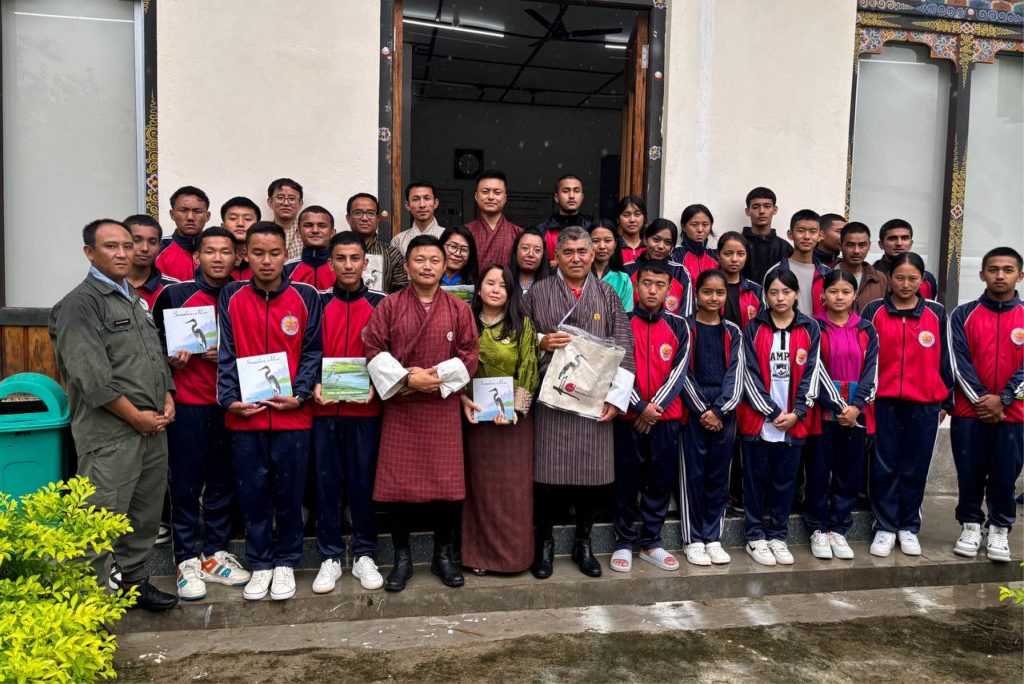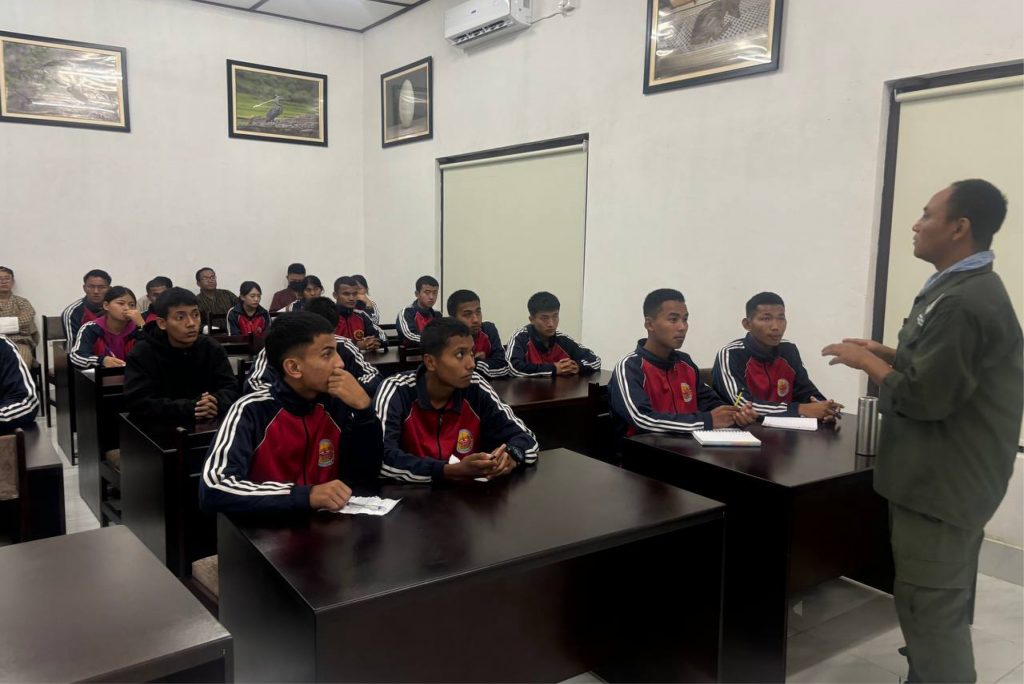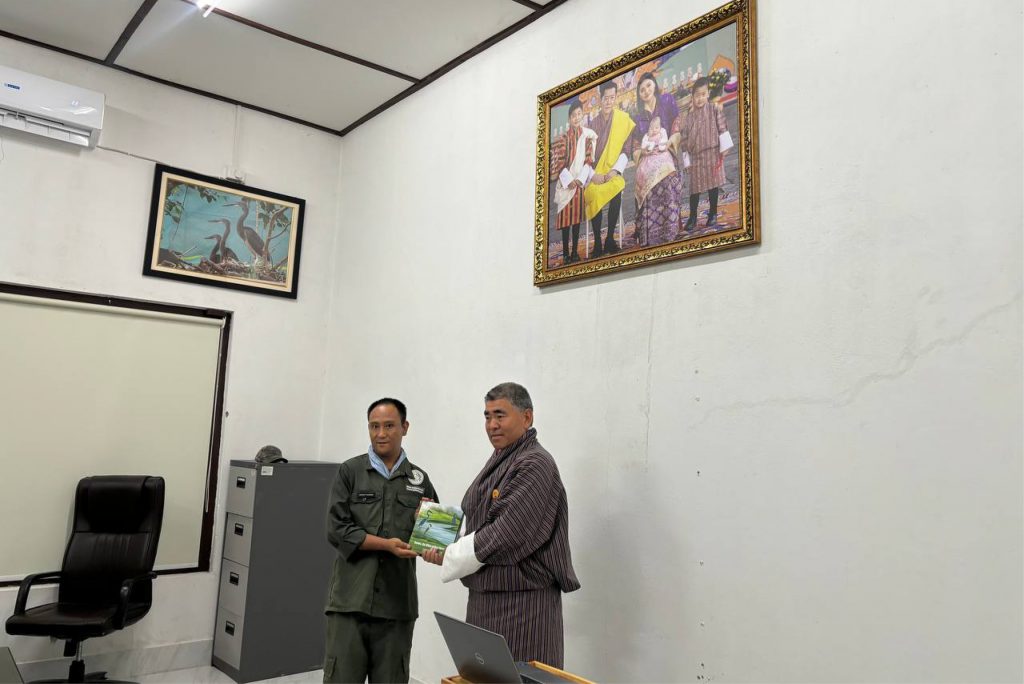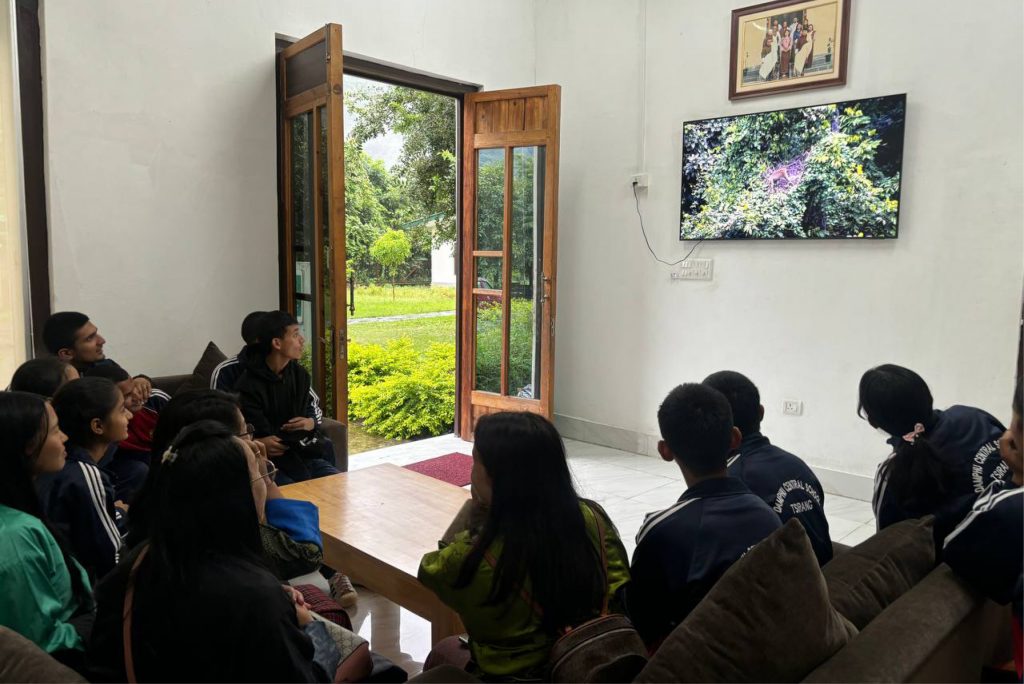The Royal Society for the Protection of Nature (RSPN) hosted an advocacy program for Damphu Central School on September 28th as part of a conservation initiative focused on the White-bellied Heron (WBH). Advocacy programs not only help to educate our community but also inspire collective action to save those critically endangered species, preserving the balance of nature and supporting global conservation efforts. Most people are unaware of the importance of White – bellied Heron’s role in balancing our ecosystem. In an effort to raise awareness and promote conservation efforts among the youth, RSPN staff of White-bellied Heron.
The program began with a presentation on RSPN role and programs and the White-bellied Heron ecology, the benefits of conserving WBH (ecological, socioeconomic), and means to mitigate the threats to WBH. Students and teachers were divided into two groups, they were introduced to captive breeding facilities of WBH and explained about the standard protocol involved in breeding, rearing and feeding WBH. In between the session students and teachers were encouraged strongly to raise questions and doubts, allowing them to voice their thoughts and curiosity about the WBH conservation. Staff members provided explanations and answers enhancing their understanding of the complexities of conservation work.
The advocacy program successfully met its objectives of raising awareness and fostering a sense of responsibility among students towards environmental conservation. Feedback from the students and teachers indicated that the program was both educational and inspiring. Moving forward, it is crucial to maintain momentum by continuing to engage students in conservation initiatives and providing them with opportunities to contribute positively to the environment.
Student participation included both male and female students of mid -term examination topper from Class 9, 10,11 and 12. In total there were 12 numbers of female participants and 21 numbers of male participants including the teachers.




Copyright © 2025 RSPN All Rights Reserved